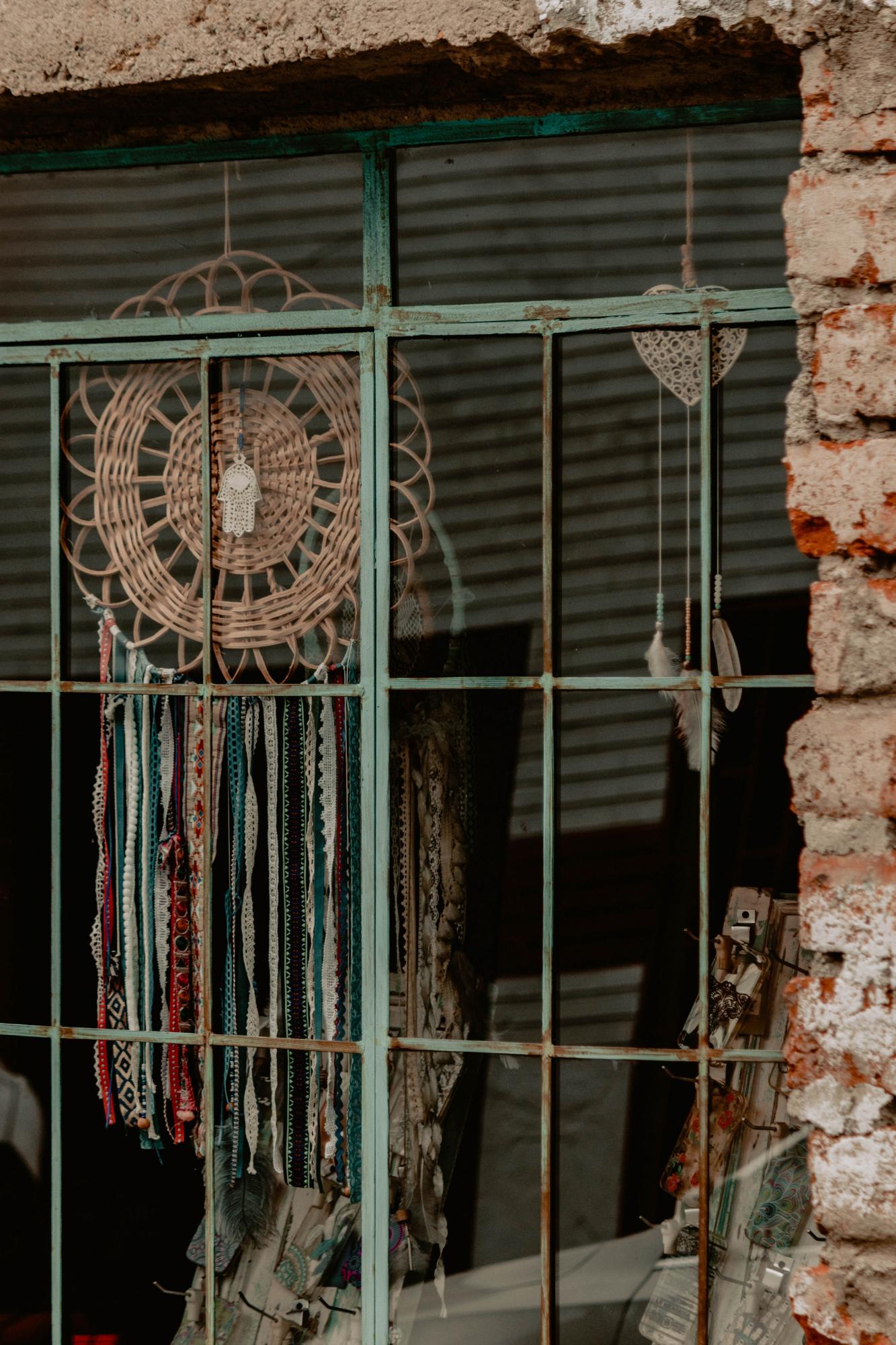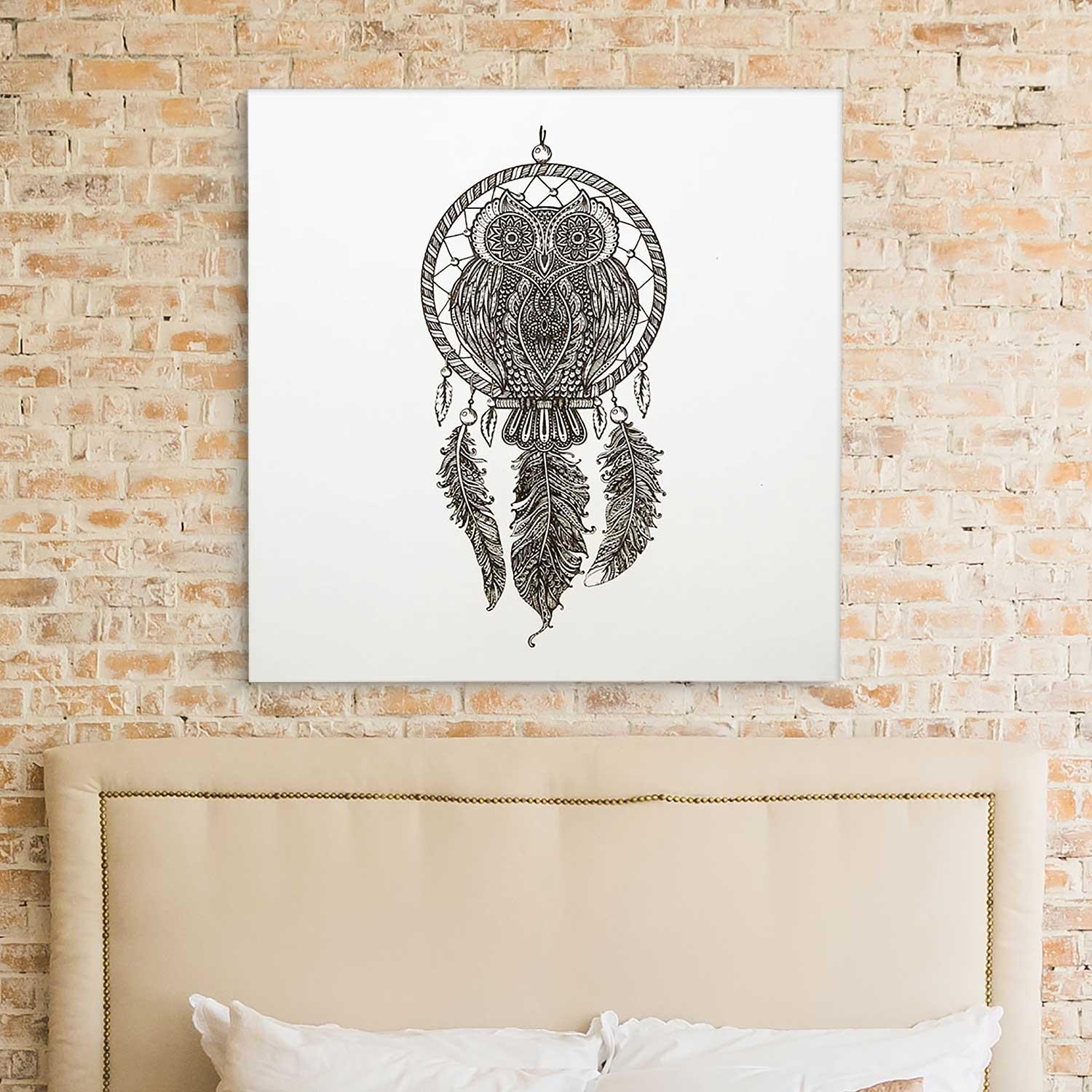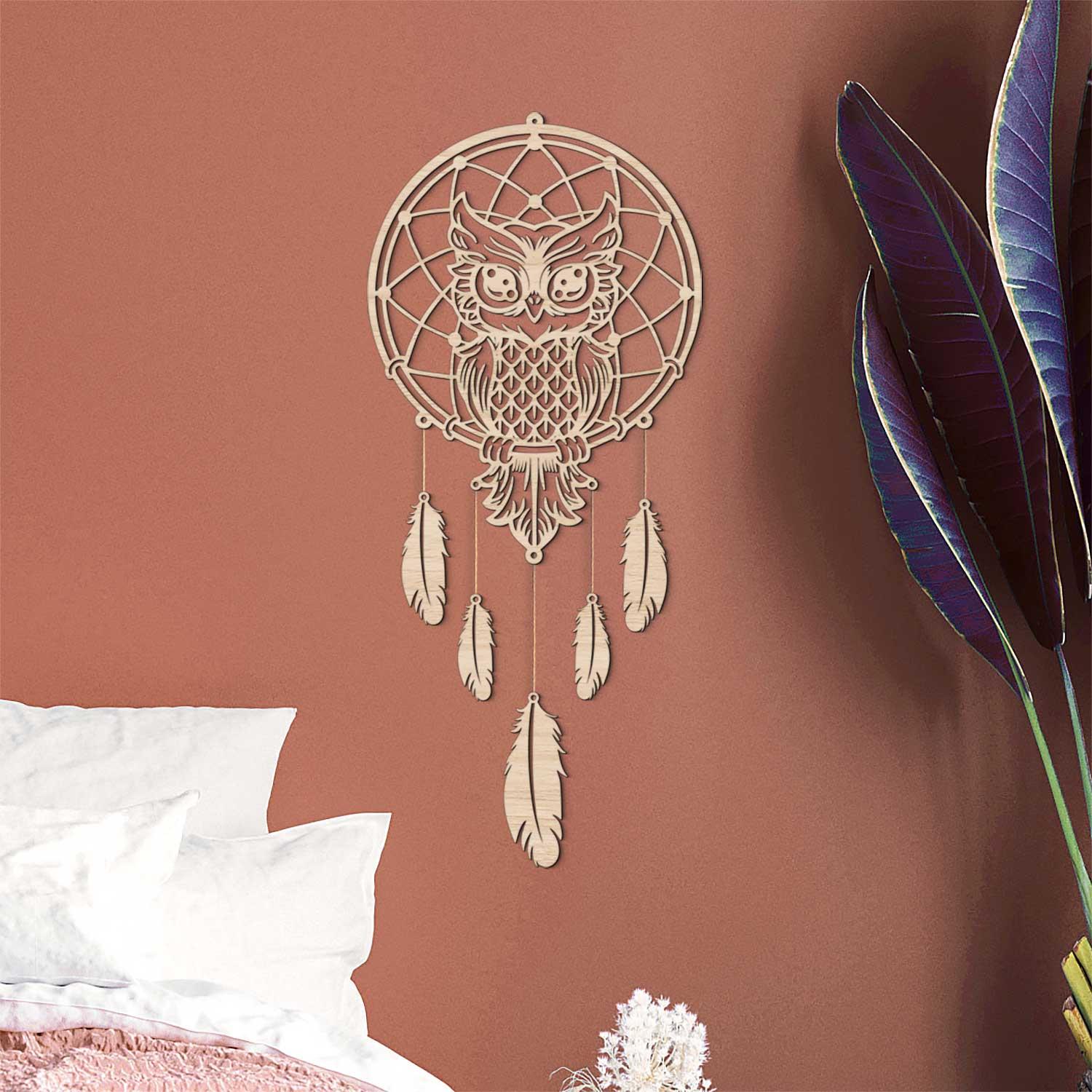
Dreamcatcher – Talisman or Decoration?
The dreamcatcher is not only an intriguing decoration but, above all, a significant talisman that has become popular in many households due to its effects on individuals. Discover fascinating facts, symbols, and the meaning behind the dreamcatcher, as well as why you should consider owning or crafting one, in our article.
Dreams are the best source of motivation and often influence our daily functioning and mood. If we experience nightmares—whether caused by overeating at night or by more serious, long-term issues—sleepless nights might be easier to resolve than they seem.
Whether you’re the kind of person who searches for the meaning of your dreams in dream dictionaries first thing in the morning or you take a more pragmatic approach, a dreamcatcher is first and foremost a timeless decoration that fits into any home.
In this article, you’ll learn everything you wanted to know about dreamcatchers:
- What is a dreamcatcher?
- History and legends
- The meaning of a dreamcatcher
- Where to place a dreamcatcher in your home
- How to make a dreamcatcher
- The significance of colors and decorations in a dreamcatcher
1. What is a dreamcatcher?
A dreamcatcher is a protective talisman with magical power meant to guard us against nightmares, bringing peaceful sleep and happiness.
Gallery of various dreamcatchers:
Dreamcatchers experienced a “boom” in the 1980s, becoming a widely crafted item. Traditional dreamcatchers are still made using age-old methods in Native American communities and cultures. The term “dreamcatcher” was adopted in the 1960s and 70s as a symbol of unity among various Native American tribes. It appeared in media about a decade later and was labeled a “native craft product.” In the 1990s, as their popularity grew, dreamcatchers became widely sold in forms like wall art, keychains, pendants, or the original hanging dreamcatchers designed to be placed above beds.
2. History and legends of the dreamcatcher
Dreamcatchers date back to pre-Columbian times, originating with Native American tribes. Only shamans were traditionally allowed to make these sacred items, though according to an ancient story, the first dreamcatcher was crafted by someone else. A Sioux legend tells of a woman who couldn’t soothe her baby, who cried even in its sleep. She sought advice from an elder, who instructed her to create a talisman for peaceful sleep. From then on, the baby slept soundly, and the first dreamcatcher was born.
 Source: unsplash.com
Source: unsplash.com
The Lakota legend tells of a shaman who had a vision atop a mountain during prayer. A spider-woman named Iktomi appeared, speaking in a sacred language. She held willow twigs, horsehair, feathers, and beads. As she spoke, she wove a dreamcatcher. She handed it to the shaman, saying: “This web is a perfect circle with a hole in the center. Use it for yourself and your people. It will help you achieve goals and realize dreams. Trust the Great Spirit, and this web will catch positive energy while the bad slips through the hole.” Since then, the Lakota people have used dreamcatchers.
 Source: freepik.com
Source: freepik.com
Another legend links dreamcatchers to the mythical Atlantis. It is said that Atlantean high priests used them to interpret dreams. Legend has it that an Atlantean high priest, Imhotep, introduced them to Native American culture when he joined the Cherokee tribe after leaving Atlantis. Today, they are seen as a symbol of ancient wisdom and guardianship of the Earth.
3. The meaning of a dreamcatcher
Dreamcatchers still hold many meanings—they are symbols believed to ensure uninterrupted and peaceful sleep when placed near or above the bed. Morning sunlight filters through the beads and webs, capturing bad dreams while letting the good ones slide down the feathers to the sleeper. Mothers used to give dreamcatchers to children who struggled to sleep, and they are also used to harmonize energy in a space.
 Children's dreamcatcher by DUBLEZ
Children's dreamcatcher by DUBLEZ
As an amulet, a dreamcatcher is believed to positively influence our dreams, sleep, and overall life. Its shamanic and Native American powers are said to summon peaceful dreams while warding off negative energy. It regulates the flow of positive Chi energy and protects against dark forces. Dreamcatchers are also thought to calm the mind and safeguard the subconscious.
An ancient legend suggests that life presents us with both good and bad forces. Listening to the good ones leads us on the right path, while the bad can cause harm. If people believe in the talisman’s magic, they will experience better dreams, visions, and thoughts and become more goal-oriented. Whether or not one believes, we all have symbols or items that bring us luck and protection in various situations.
A few interesting facts about dreamcatchers:
- Some pre-Columbian dreamcatchers featured Roman and Chinese coins.
- In tribes, shamans crafted the dreamcatcher, while the owner added personal adornments like stones, shells, pearls, or beads that held special meaning.
- The rarest minerals used by Native Americans included magnesite and crystal.
- Dreamcatchers often featured at least one feather from a bird of prey—most prized were those from owls and eagles.
4. Where to place a dreamcatcher in your home
The placement of a dreamcatcher depends on what you want from it. If you wish for restful sleep and to prevent nightmares, hang the dreamcatcher directly above your bed. According to Native American tradition, it should be within reach of sunlight so that the first rays of dawn can destroy the negative energy and "erase" bad dreams from the web.
You can also hang a dreamcatcher on a wall in any room to bring peace, harmony, and positive energy to your home. If hung on a window, it is believed to block bad energy, while one placed above a TV or computer is thought to filter negative energy emitted by these devices. However, some believe a dreamcatcher is a very personal item and should not be placed where it is visible to outsiders, as their gaze might disrupt its energy. These different interpretations and perspectives highlight the versatility of this symbolic decoration.
 Source: unsplash.com
Source: unsplash.com
If you want your home to exude harmony and spiritual balance, you can consider incorporating a piece of wall art featuring a dreamcatcher. Modern trends embrace blending styles, designs, and materials, making a dreamcatcher-themed piece a great addition to your living room. For instance, our artwork of an owl within a dreamcatcher could be a perfect match.
 Large wooden dreamcatcher wall art by DUBLEZ
Large wooden dreamcatcher wall art by DUBLEZ
A dreamcatcher can also serve a dual purpose in your bedroom—filtering bad dreams while adding charm as part of a “canopy” over your bed. If one dreamcatcher isn’t enough, feel free to use several. Beautifully arranged on a simple branch, they can add warmth and elegance to any space in your home.
 Source: unsplash.com
Source: unsplash.com
If you prefer to avoid maintaining a real dreamcatcher, a great alternative is a wooden dreamcatcher wall decoration. These can be a charming addition to a child’s room, offering protection from bad dreams for the little ones.
 Wooden dreamcatcher by DUBLEZ can be customized to suit your preferences.
Wooden dreamcatcher by DUBLEZ can be customized to suit your preferences.
You can even hang your dreamcatcher outdoors—on a balcony or veranda. According to Feng Shui, the best location is the southwest direction, and care should be taken to ensure that no one walks directly underneath it, as folklore suggests this could cause money to leave the family.
5. How to make a dreamcatcher
Ancient Native Americans wove the first dreamcatchers from willow twigs and cotton thread, but we’ll provide some tips to make the process easier and more relaxing.
You’ll need: a hoop, thread, feathers, beads, and any other decorations you’d like to include. You’ll also need basic tools like scissors, a hot glue gun with glue sticks, and pins.
- Start by choosing a hoop—it can be wooden or metal, depending on your preference. The size of the hoop depends on how big you want your dreamcatcher to be. For beginners, a hoop with a diameter of 13–20 cm is ideal—it’s neither too large nor too small.
- Wrap the hoop in suede lace or ribbon. The lace length should be 18 times the hoop’s diameter (for example, for a 13 cm hoop, you’ll need approximately 2.5 meters of lace).
- Select a material for the “web”—you’ll want something strong but flexible. Artificial sinew, hemp cord, waxed nylon thread, or silk thread work well. Cotton thread is commonly used because it’s flexible and easy to handle. The thread length should be ten times the hoop’s diameter. Traditionally, natural-colored thread is used, but feel free to choose any color you like.
- As you weave the web, add beads, stones, shells, or other decorations to your liking. Those with holes can be threaded on during weaving, while others can be glued on with a hot glue gun. There are many patterns and varying levels of complexity—techniques like macramé or crochet can also be incorporated.
The size and style of the dreamcatcher are entirely up to you, so choose hoop sizes and decorations that match your taste. Crafting a dreamcatcher typically takes about two hours, though this depends on how intricate you want it to be and how much time and effort you wish to invest.
Dreamcatchers don’t have to be traditional circles with symmetrical designs. You can experiment with semi-circular designs or interlocking hoops for a unique look. Creativity knows no bounds!
Gallery of dreamcatcher-making:
Dreamcatchers can take the shape of circles, moons, hearts—whatever you envision and are capable of crafting. Creativity has no limits.
Handmade macramé dreamcatcher:
Making a classic dreamcatcher:
6. The significance of colors and decorations
Each color in a dreamcatcher evokes different types of dreams and influences different kinds of energy, so folklore advises us to choose the colors of our decoration carefully:
- White – Symbolizes purity, clarity, and innocence. It enhances thoughtfulness and amplifies the effect of the colors it’s paired with.
- Red – Represents fire, movement, passion, and courage. It energizes and activates emotions.
- Orange – Symbolizes energy, youthfulness, joy, and a desire for change. It absorbs negative energy and helps overcome tough situations.
- Yellow – The brightest color, symbolizing hope, happiness, and a good mood.
- Green – A calming color of nature, balance, and hope. It symbolizes new beginnings, harmony, and sensitivity.
- Blue – Represents responsibility, peace, and freedom, evoking the sea and sky.
- Purple – A color of creativity, luxury, spirituality, and mystery. It symbolizes inspiration and hope.
- Brown – A natural color symbolizing patience, reliability, and stability. It represents reason and intelligence.
- Black – A symbol of strength, elegance, and infinity. It represents sexuality but is often associated with mystery, sadness, or evil.
A dreamcatcher is composed of several elements, each with its significance:
- The hoop represents the world surrounding and protecting the person symbolized by a bead or ring in the center.
- Feathers or other objects sort dreams, letting the good ones slide down to the sleeper. Feathers also symbolize freedom.
- The web within the hoop catches bad dreams to be destroyed at dawn.
- The symmetry of the web represents harmony.
- Beads symbolize the Earth and the planets around it.
- Shells represent home and safety.
- Pearls signify hidden treasures within us.
- Chinese coins symbolize harmony between heaven and earth, bringing luck and abundance.
- Other materials like stones, nuts, shells, twigs, and natural gifts symbolize the connection to nature. Buttons, pendants, and charms made of various materials can also be used.
We hope this article has provided insight into this multifunctional item, which, beyond its spiritual value, brings peace and happiness to your home. Sweet dreams! :-)





























































































